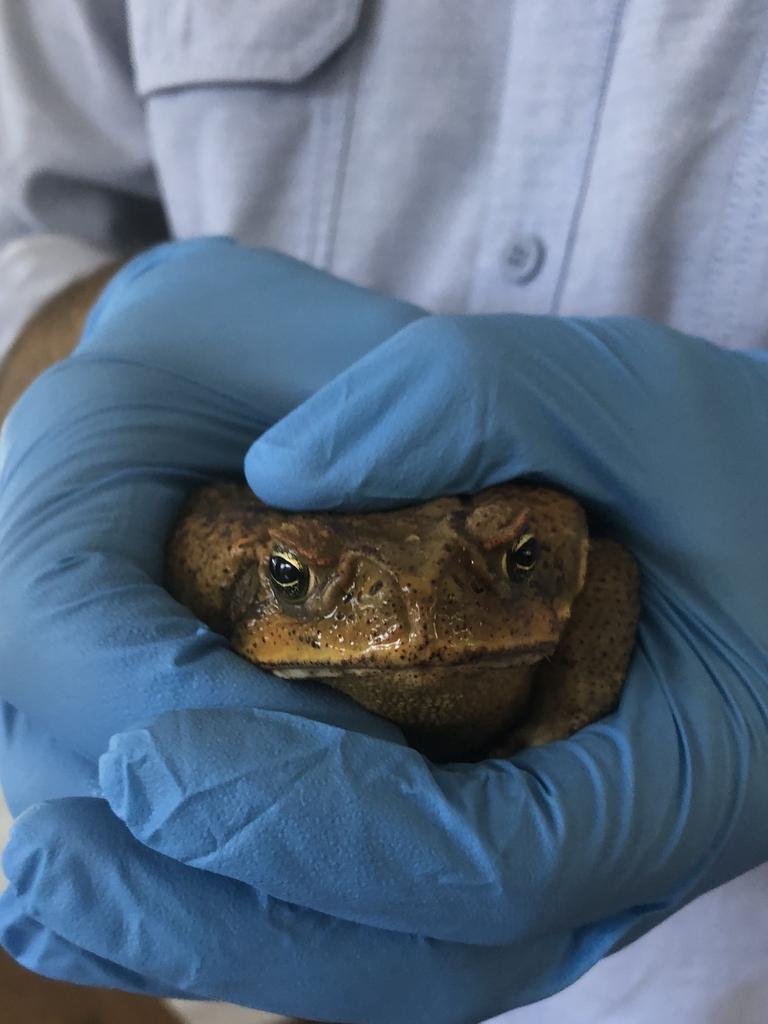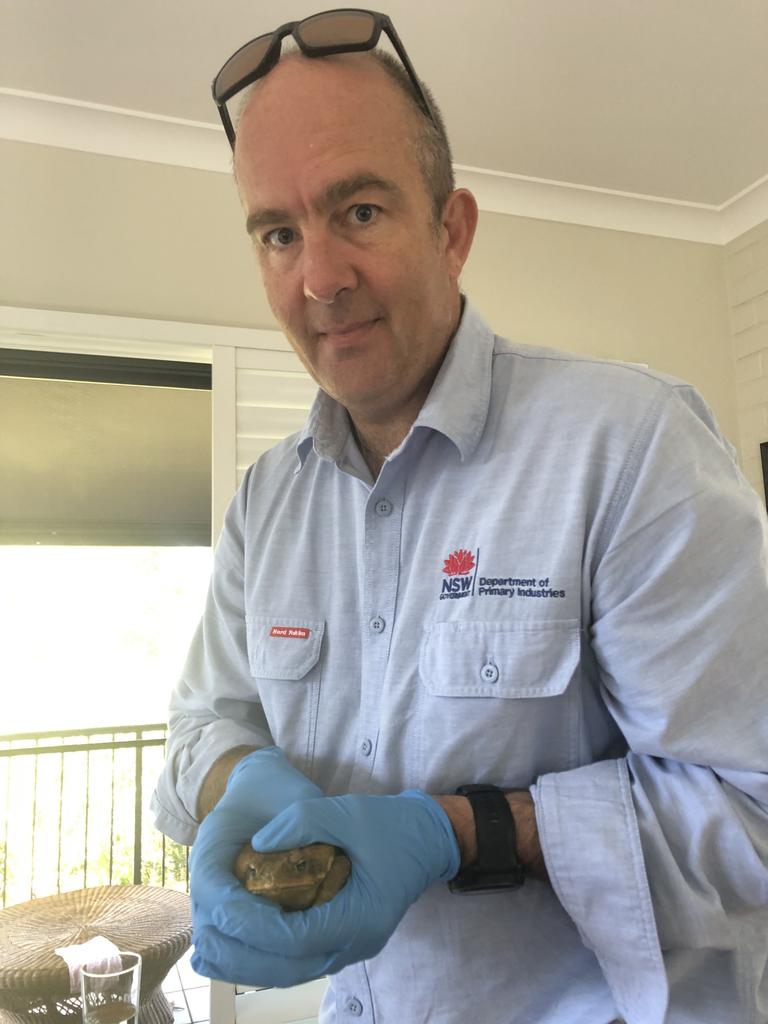Hitchhiking cane toad pests making their way around NSW
Once a pest only Queenslanders had to contend with, the invasive species continues to spread across Australia, with more sightings in NSW.
The pesky cane toad continues to infiltrate NSW with recent sightings putting authorities on high alert.
The invasive pest has been captured on Sydney’s northern beaches recently and the southern riverina region before that.
Those sightings come after the NSW Government issued a statement in January warning residents to keep an eye out for the unwanted animal.
It’s believed the introduced pests are hitchhiking their way into NSW from Queensland through freight, green waste or loads of timber.
They could even be hitching a ride on someone’s car.
NSW Department of Primary Industries invasive species officer, Ian Turnbull, told the Manly Daily there had been eight to 10 captures of cane toads a year in the greater Sydney area.
RELATED: Why cane toads are rapidly evolving

In January, they had been reported in the Sydney, North Coast, South Coast and North West regions.
The most recent capture was from a Narraweena resident who came across one while walking her dog near her home in Waratah Pde on Wednesday.
She caught the toad in a plastic container and sent photos to DPI before Mr Turnbull was sent out to investigate.
“Thankfully it was a male, but we still have to work out if it may have had a mate that it can breed with,” he told the Manly Daily this week.
“It was important that we identified whether it was a male or female, because a pregnant female can deposit a clutch of up to 30,000 eggs at one time.”
READ MORE: Pauline Hanson’s radical plans to kill cane toads


Unfortunately the one found in Jindera last week was a female and a post-mortem could not be done to find out whether it had been carrying eggs or had just laid them.
It was the first sighting of the toad so far south in NSW.
Murray Local Land Services Manager of Biosecurity and Emergency Services Geoff Corboy told the ABC that it was hoped they wouldn’t survive winter but residents were still being asked to keep an eye out in the meantime.
The cane toad originates from the southern United States and tropical South America and was introduced to Australia as part of a biological control program for beetle pests of sugar cane.
Intentional cane toad releases occurred in northern Queensland and northern NSW but the species has now spread across Queensland, the Northern Territory, Western Australia and now further into New South Wales.
The species has the ability to cause devastating impacts on communities, native wildlife and ecosystems due to their ability to spread to new areas, use limited natural resources and to poison animals that try to eat them.
DPI says while there is no broadscale method to control the cane toad, maintaining awareness, reporting their presence and managing them responsibly when detected will help in slowing the spread and further establishment of cane toads in NSW.




